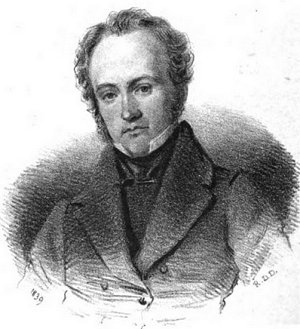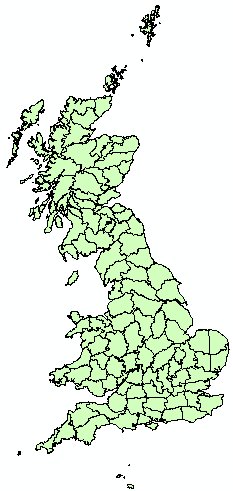| 1804 May 9: Birth |
Most sources, including the Dictionary of National Biography, state that he was born in Firbeck, Yorkshire, on this date. |
|
1824 May 12:
Articles of Clerkship |
Hewett was articled as clerk to Charles Jackson, attorney, of Manchester. |
|
| 1828: Edinburgh University |
About this time Watson commenced medical studies at Edinburgh University. Although continuing for four years he does not appear to have taken final examinations. |
|
1829 October:
A Natural History Exchange - his early thoughts |
Magazine of Natural History 3 (1830) p185
A Depot for the Exchange of Natural History Articles.- Sir, The naturalist, whom professional or other duties confine to a strictly local dwelling, often experiences great difficulty in procuring specimens of plants and animals from other quarters, when desirous of studying something of Nature's productions beyond those of his own immediate vicinity ; and, if not fortunate in distant or locomotive scientific friends, it becomes almost an impossibility to him, by reason of the local habitats of so many of our animal and vegetable productions. To remedy this inconvenience, felt more or less by all naturalists, and to afford facility for the exchange of specimens, it would be very desirable for those interested in natural history, and forming museums or collections, to have some fixed place where their supernumerary specimens might be sent, and from which they could receive others wanted, either in exchange for their own, or by payment of a certain price for each specimen. I am strongly persuaded that if some competent individual in town would allot a room and portion of his time to this scheme, it might be made to answer as a pecuniary speculation, and be of great general utility to naturalists. He might obtain remuneration for his services either by stipulated charges on all exchanges effected, or by yearly subscriptions or entrance fees from all persons placing specimens in his hands. As personal attendance in town would be inconvenient to many who would be most likely to support and be benefited by such an establishment, some plan must be adopted to facilitate the exchange or sale of specimens. Suppose appointed individuals take Smith's English Flora, Stephen's Catalogue of British Insects, &c, and, running over the species, mark each one with a number corresponding to its rarity, or other circimistance enhancing its value; these numbers being so arranged, that one species marked 12 shall be worth four specimens of those numbered 3; one of No. 60 be equal in value to five of No. 12, and to twenty of No. 3. These numbers might be regarded as stamping a commercial value, and would thereby enable the naturalist, who might have none to give in return, or not wish to receive any, to sell or buy, which would still further increase the facilities of obtaining desired species. The numbering or pricing could easily be arranged, by estimating all mincralogical, botanical, entomological, and conchological species as No. 3 (or 3d. each), unless otherwise stated ; those regarded as more valuable having an appropriate number attached to them. Vertebrate animals, dead, prepared, or alive, should, in like manner, have a minimum price for each state, and an increasing scale. An establishment of this nature might be limited to the productions of the British Isles, or include exotic natural history. A general catalogue of species, with the numbers affixed, might be published as a guide to those sending or requiring specimens. By inserting these hints in your Magazine, the attention of naturalists may be directed to the utility of the plan here proposed ; and if they can elicit any advice from yourself on the subject, it will much gratify, Yours, - H. C. W. Edinburgh, Oct. 1829.
Although only identified by his initials, in a previous edition of the magazine a contributions signed HCW was also indexed under his full name. |
|
| 1831: Gold Medal |
¹Caledonian Mercury - 1831 August 4
BOTANY. - At the termination of the Botanical Course, on Thursday last, the following prizes were awarded :-
To Mr Hewett Watson of Liverpool, for the best Essay on the geographical distribution of plants - A Gold Medal. |
|
1831 March:
Botanical Exchange - a more modest proposal |
Magazine of Natural History 4 p166
Botanical Exchange. - Sir, in Vol. III. p.470., I noticed a letter offering an exchange of ornithological specimens. Will you allow me to make use of your pages to solicit a similar exchange of botanical preparations with any of your readers. The plants of Cornwall and Scotland I could offer for those of Ireland or Wales, or of the eastern or midland counties of England. Among your numerous readers there may be some to whom this proposal will be acceptable; and if so, I shall be glad to exchange lists of desiderata and duplicates with them. The lists need not be limited to the particular districts named. A letter, addressed "H. C. W., College Post Office, Edinburgh," will be immediately answered. I am, Sir, &c. - H.C.W |
|
1834 March 18:
Linnean Society |
Hewett Watson was elected as a Fellow of the Linnean Society. |
|
| 1835: Publication |
Remarks on the geographical distribution of British plants
[Biodiversity Heritage Library] |
 |
| 1836 November 10 : Botanical Society of Edinburgh |
Watson was among the early members of this important society. |
|
1837:
Phrenological Journal |
In the autumn Watson bought the Phrenological Journal and assumed the role of editor. |
|
| 1839: Biography |
An early incarnation of The Naturalist carried a pen-portrait of Hewett which gives extensive biographical information of his ancestors and early career.
"The natural bent of Mr. Watson's mind adapts him much better to the study of sciences involving causation and exact reasoning, than the pursuit of Botany or Natural History."
... Neville Wood's assessment of Watson now seems inappropriate - the "science" being phrenology. |
 |
| 1840 November 30: Botanical Society of London |
Hewett C. Watson FLS and John G Children FRS were elected as vice-presidents of the Botanical Society of London. For almost a decade after this, along with G. E. Dennes, he was closely associated with the Society's exchange activities. |
|
| 1842: The Azores |
In this year Watson made his only excursion outside Britain - a three month excursion to the Azores. He wrote of his voyage in The London Journal of Botany 2, 1843. [Google Books] |
 |
| 1844: Publication |
London Catalogue of British Plants
This was the first of many editions of this catalogue, produced for the Botanical Society of London, which was updated and published many times. Watson was involved with the publication of this catalogue until 1873 (7th edition). G. E. Dennes was also involved with eds 2 and 3 and J. T. Syme with the 4th and 5th.
The link here is to the 4th edition (1853) [Google Books] |
 |
| 1847: Publication |
Cybele Britanica - volume 1
[Biodiversity Heritage Library] |
 |
| 1849: Publication |
Cybele Britanica - volume 2
[Biodiversity Heritage Library] |
 |
| 1852: Publication |
Cybele Britanica - volume 3
[Biodiversity Heritage Library] |
 |
| 1859: Publication |
Cybele Britanica - volume 4
[Biodiversity Heritage Library] |
 |
| 1870: Publication |
A compendium of the Cybele Britanica
[Biodiversity Heritage Library] |
 |
| 1873: Publication |
Topographical botany
[Biodiversity Heritage Library] |
 |
| 1881 July 27: Death |
¹Western Daily Press - 1881 July 30
Mr Hewett Cottrell Watson died at his residence, Thames Ditton, on Wednesday. He was a son of Mr Holland Watson, a Lancashire magistrate, of antiquarian proclivities, and was born in 1804. He completed his education at Edinburgh University, where he became acquainted with George and Andrew Combe. As a consequence of this acquaintance he became editor of the "Phrenological Journal," but soon afterwards, finding that he had given great annoyance to the most ardent phrenologists by showing that their definitions were inadequate and misleading, he resigned the appointment. From that time he applied himself in a great measure to botanical science. &c. ...
His obituary in Journal of Botany, 19 257 - 265, was written by his friend and protégé John Gilbert Baker. [Biodiversity Heritage Library] |
 |
| 1883: Publication |
Topographical botany - second enlarged edition
Watson died before this revised edition was completed. After his death it was completed and published by his friends J. G. Baker and Rev. W. W. Newbould. [Biodiversity Heritage Library] |
 |
1907 October 8:
Death of Housekeeper |
Grace Eastman of Atherington, Devon, was his housekeeper for over 40 years. After his death she remained in Long Ditton. |
|






